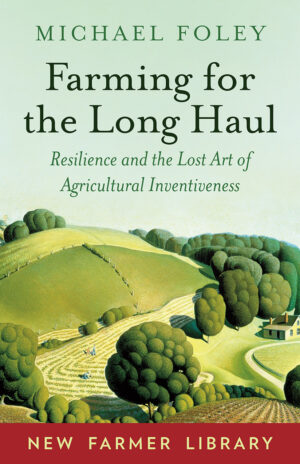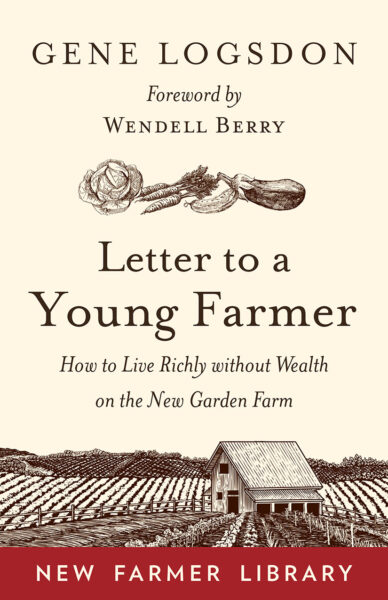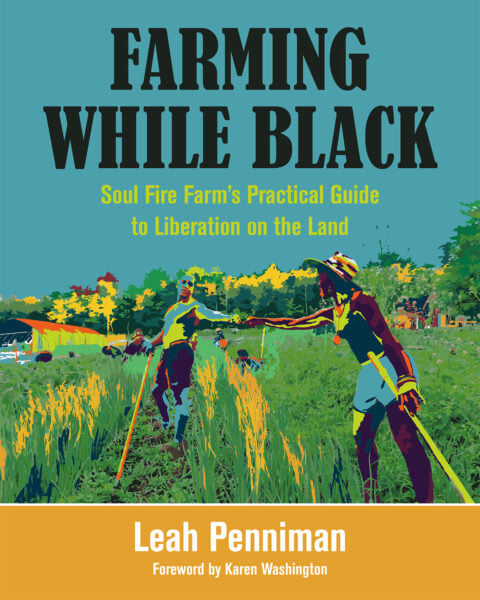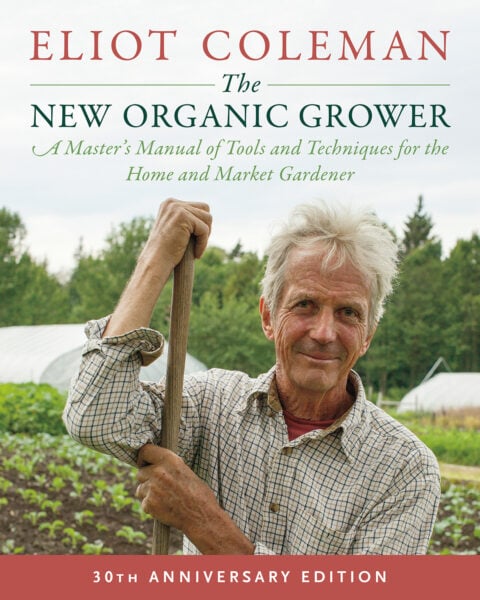Sustain Your Land: Subsistence Strategies for the Long Haul
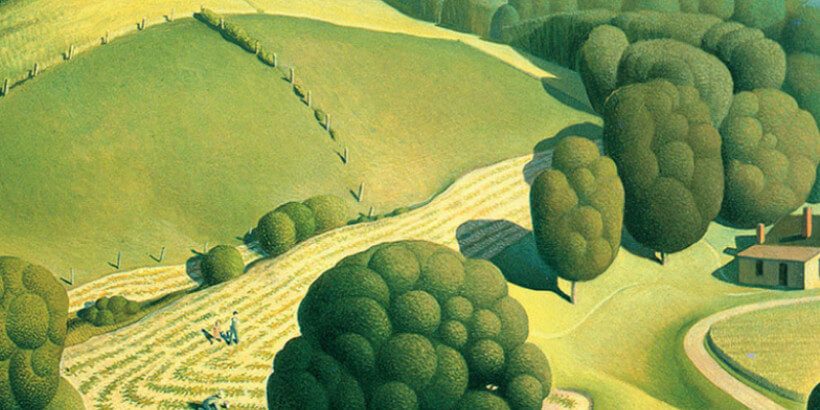
Peasants, indigenous agriculturalists, and old-time American farming families farmed first and foremost to feed their own families and those in need in their communities—only secondarily, if at all, for a market. They may have practiced shifting agriculture or were settled permanently in villages; they may have been members of free, “primitive” or “tribal” societies, or peasants tied to a manor. They may have produced for a lord or the king or a market. They may have been “homesteaders” or market farmers. But all produced first of all to sustain their own families and dependents.
The following excerpt is from Farming for the Long Haul by Michael Foley. It has been adapted for the web.
Prefer audio?
Listen to the following excerpt from the audiobook of Farming for the Long Haul.
As mandatory participants in the contemporary market economy, today’s farmers have to produce for the market as part of their own subsistence strategy. Even for us, subsistence comes first. If we can’t provide for ourselves, we can’t feed others. Somehow or other we have to stay afloat economically. We tend, however, to see the issue in purely monetary terms. If we don’t earn enough money—on the farm or in off-farm employment—we don’t stay afloat. We share with all farmers in the past our determination to subsist, one way or another. But traditional subsistence practices have relevance beyond that abstract commonality, because traditional practices were built on strategies of resilience. A resilient farm is one where the farm family can draw on its own production to feed itself in hard times, when markets fail or market prices prove ruinous.
The consequence is that any strategy of resilience has to take the market into account. But it has to include more. The good news is that agriculture can provide the surplus that makes integration into a larger economy possible. The bad news is that surplus production puts us at the mercy of whatever mechanism society has devised to extract that surplus from us, whether it’s manorial dues or the Chicago Mercantile Exchange. The bad news is also that much of the natural resource base that traditional agriculturalists would have depended upon in crafting a livelihood is no longer available to farmers. Here we’ll look at traditional subsistence strategies before turning back to our entanglement in the modern market.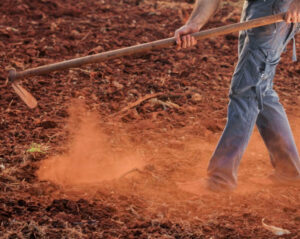
These are justly celebrated examples of how to confront the market we face today with invention, sustainable practices, and resilience. But the prospects that current market conditions will govern our lives ten or twenty years from now are low. The resilience on which subsistence must be based means being in a position to adapt as petroleum supplies falter, markets go erratic, or financial crisis makes debt and further borrowing unsustainable. In the meantime, we have to get a living and do so in a way that develops the tools and skills needed for an uncertain future. A Saudi prince may advocate keeping the oil in the ground to provide the basis for the plastics of the future, but we are not going to do that, and who wants more plastic anyway? Until oil depletion makes both transportation and plastic outrageously expensive, however, we will continue to use both.
My own micro-farm uses greenhouse plastic, synthetic row cover, shade cloth, and landscape cloth, all petroleum-based. That’s how we keep up the year-round production that makes ours a viable market garden, not to mention providing vegetables for ourselves and our community in the winter months. Significant strides in producing non-petroleum-based agricultural plastics are not in sight. So we provide for ourselves and our neighbors now with strategies that will be finished when the Age of Oil is over, not so many years down the line. Plastic keeps us on the land and gives us time to develop new strategies, but we had better get to it.
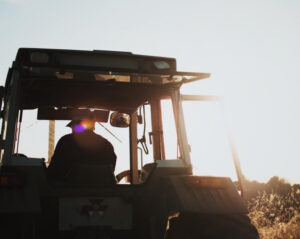 The same is true of transportation. In my area we have recently begun to fill in the “missing piece” in the puzzle of developing a local agriculture, a food hub that can move food from one part of our scattered rural county to another. All very good, but our oil footprint, however small relative to the well-traveled, fifteen- hundred-mile head of cabbage, is still an oil footprint. As far as I can see, the prospects for an electric truck fleet to keep that food moving are dim, Elon Musk notwithstanding. And those trucks, solar- or wind-powered, still have to move on roads that, up to now, are maintained with major fossil fuel inputs, from diesel fuel to asphalt to concrete. The local foods of a resilient future are likely to be very local; our task is to build the capacity to provide most of the calories for ourselves and our neighbors before the crutch of the Age of Oil crumples. In the meantime, though, we need that food hub to have the ability to produce and sell in a world still dominated by Big Ag and bigger supermarkets. Because if all the local farmers have quit because they can’t make a living today, there will be no resilient food economy to feed us in the not-so-distant future.
The same is true of transportation. In my area we have recently begun to fill in the “missing piece” in the puzzle of developing a local agriculture, a food hub that can move food from one part of our scattered rural county to another. All very good, but our oil footprint, however small relative to the well-traveled, fifteen- hundred-mile head of cabbage, is still an oil footprint. As far as I can see, the prospects for an electric truck fleet to keep that food moving are dim, Elon Musk notwithstanding. And those trucks, solar- or wind-powered, still have to move on roads that, up to now, are maintained with major fossil fuel inputs, from diesel fuel to asphalt to concrete. The local foods of a resilient future are likely to be very local; our task is to build the capacity to provide most of the calories for ourselves and our neighbors before the crutch of the Age of Oil crumples. In the meantime, though, we need that food hub to have the ability to produce and sell in a world still dominated by Big Ag and bigger supermarkets. Because if all the local farmers have quit because they can’t make a living today, there will be no resilient food economy to feed us in the not-so-distant future.
Resilience, then, has at least two big parts. One is to build the capacity to feed ourselves and our communities now. And that depends on adopting the best strategies for keeping ourselves afloat and farming for the near future. The other is to develop the tools and techniques for a future when many of the resources we rely on now either will not be available or will be financially out of reach. The subsistence strategies of the past give us lots of hints about how to do the second of these.
One of the key lessons of the persistent agricultural systems of the past is a dependence on diversity. Our range of products, our production strategies, our ability to produce for year-round consumption are all key to our subsistence and thus to our survival as farmers. When our primary market fails us, when the cost of gas and propane skyrocket, when groceries are just too expensive, farms that have livestock for family consumption, firewood readily available, plenty of vegetables, and calorie crops like potatoes, flint and flour corn, dry beans, and winter squash will be better able to weather the storm and face the future.
Being able to muster a variety of growing techniques, from dry farming to season extension, and growing crops with differing requirements will increase our ability to face changing weather patterns. Biological diversity is thus key to our future. Homesteader and plant breeder Carol Deppe has stressed the need to develop new varieties on-farm as we face new diseases and climate change.21 Many farmers already save seeds and have learned or are learning the rudiments of plant breeding. Even in today’s market, as another homesteader, Will Bonsall, says, if we keep buying seed we remain a slave to the marketplace and encourage breeders to produce hybrids and trademarked varieties that keep us captive.22 Worse, we will see the genetic diversity on which adaptation to our climate and our conditions depends continue to be eroded. And developing a diversity of varieties of even a single crop increases resilience. Like the Mountain Pima farmers in Mexico who hold in reserve two or more maize varieties specially adapted to shorter growing seasons or a cold, wet start, we need to plan for adaptability.23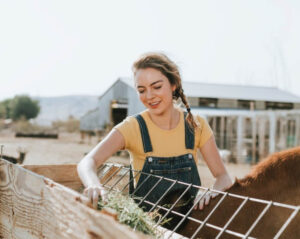
We can also begin to imitate the maize and chili producers of Mexico and the Southwest and encourage wild diversity within our farms. Farmer Bob Cannard is notorious for tolerating “weeds” (or at least certain weeds) among the crops on his Green String Farm in Petaluma, California, encouraging biological diversity and exploiting the talent of some weeds for providing nutrients for the soil. Orchardist Michael Phillips makes the same case for the orchard floor.24 For the more fastidious, carefully selected and planted hedgerows and perennial flowers can host beneficial insects and small predators that enrich the garden, orchard, or field.
Diversity also applies to the resources available on the larger farm. Can we produce our own fertility with resources on the farm? Doing so is not just an answer to long-term sustainability but an ingredient to a lower-cost, lean farming operation today. Bob Cannard, like John Jeavons, believes a portion of cropland needs to be devoted to producing high-biomass crops for composting.
Hervé-Gruyers utilize crop residues and locally produced hay for the same purposes. Will Bonsall harvests grasses from his meadows, leaf litter from his forest floor, and ramial wood chips from tree trimmings for compost and mulch on his Maine farm. Animal manure and bedding have traditionally played the same role, though Bonsall insists that the more direct and efficient method is to use the plants that the animals would otherwise consume, both for compost and mulch and as green manure in the form of cover crops. Anyone who has built a compost pile or turned in green manures may disagree with the efficiency evaluation, but animal manure must be composted or turned in, too.
Then there’s the woodlot—where will your heat come from when the fossil fuel tank is empty? Where will the building lumber come from when the long-haul trucks stop running? It may be that solar energy can be harnessed for some time to come with available technology and that we can all cook with electric stoves and heat our houses with electric heaters, as Richard Heinberg and David Findley have recently argued.25 But having solar electricity means acquiring the ability now, while we still can, because photovoltaics depend upon rare metals mined in conflict zones like the Congo and combined in hermetically sealed and air-conditioned manufacturing facilities that may be hard to maintain in the not-so-distant future. e resilient farmer will hedge her bets, acquiring o -grid solar capacity now, if possible, and making sure that alternative sources for cooking food and warming the house are in place. We have to start, of course, with conservation. Similarly, we might build new, energy-efficient homes with heat pumps and the like, supposing we can afford those extravagant measures. But we had better build them now, while the technology is cheap. In the long haul, many of us will still depend on that woodlot, and learning to nurture it, coppice it, and use it wisely are skills we will need to build now.
The same sorts of considerations affect much of the technology farmers are currently using, from record keeping to transportation to tractors. John Michael Greer suggests that we return to the concept of appropriate technology, and that many of the technologies we will need for resilience are what he calls “trailing-edge technologies,” those that were once perfectly serviceable but were bypassed by the market. Examples abound, from ham radio to treadle sewing machines.26 It is all very well in the present market economy to tout the advantages to the entrepreneurial farmer of cutting-edge technologies like cell phone apps to track planting, harvesting, labor time, food safety compliance, or sales. But the enormous infrastructure of the internet and cell phone communications is a likely casualty of any serious collapse of the fossil fuel economy.27 That hasn’t happened yet, though net neutrality is gone, and we have to make a living as efficiently as we are able today. But it would be well to have the working knowledge of math and manual record keeping and accounting that electronic apps are replacing. And what about transportation, traction, and all that plastic in our farming system in the future? What will replace it all?
The most resilient farms of the near future will be the least dependent on petroleum-based technologies, but that raises the question of what technologies we should be preserving. We can name some trailing-edge technologies as a first step in beginning to think about how we might adopt them. Wendell Berry has long made the case that animal traction on the farm reached its technological height sometime late in the nineteenth century and that it remains perfectly suited to small-scale farming and forestry today. Draft animals can also supply the more limited transportation needs of the future. But we will have to have the animals, the tack, and the knowledge that were all abandoned seventy or eighty years ago in this country. Glass once played the role of plastic in the intensive market gardens of Paris, the Netherlands, and England. ere’s plenty of discarded single-pane and even double-pane glass around today, thanks to ever-tightening building codes, and today might be a good time to start rebuilding those propagation and hoophouses with more durable glass. It won’t last forever, but it will carry us a good bit longer than our five-year greenhouse plastics.
22.Will Bonsall, Will Bonsall’s Essential Guide to Radical, Self-Reliant Gardening (White River Junction, VT: Chelsea Green, 2015), 99.
23. Nabhan, Enduring Seeds, 96.
24. Michael Phillips, e Holistic Orchard: Tree Fruits and Berries the Biological Way (White River Junction, VT: Chelsea Green, 2012).
25. Richard Heinberg and David Findley, Our Renewable Future: Laying the Path for One Hundred Percent Clean Energy (Washington, DC: Island Press, 2016). But they also show that we can expect to have much less energy to use than the Age of Oil has provided.
26. John Michael Greer, e EcoTechnic Future: Envisioning a Post-Peak World (Gabriola Island, BC: New Society, 2009), 154–58.
27. John Michael Greer’s discussion in Dark Age America, 160–68, is the only considered analysis of the future of the internet in an age of energy contraction I’ve found.
Recommended Reads
Recent Articles
Garden strawberries are excellent for both covering the ground and for growing fruit. If you’re planning out a forest garden, or are just looking for a plant to use as ground cover, strawberries are a great option. The following is an excerpt from The Home-Scale Forest Garden by Dani Baker. It has been adapted for…
Read MoreAsparagus is a delicious vegetable with a layered history. How did this aspiring spear make its way from growing in the wild to appearing on our plates? The following is an excerpt from the The Seed Detective by Adam Alexander. It has been adapted for the web. “Nature gives us the key to every secret…
Read MoreInterested in growing trees? Here are some tips on successfully planting, transplanting, and pruning trees to create a flourishing forest garden! The following is an excerpt from The Home-Scale Forest Garden by Dani Baker. It has been adapted for the web. Planting Potted Trees and Shrubs If you order potted trees, check with your supplier to…
Read MoreWith the right strategies and practices, composting on a small farm is surprisingly easy and inexpensive. Just follow these steps for making compost, and your farm will be thriving in no time! The following excerpt is from The Lean Farm Guide to Growing Vegetables by Ben Hartman. It has been adapted for the web. (All photographs by Ben…
Read MoreGarlic mustard: while known as “invasive,” this plant can be consumed in its entirety and has great nutritional value. Plus, the garlic-flavor is a perfect addition to any recipe that calls for mustard! The following are excerpts from Beyond the War on Invasive Species by Tao Orion and The Wild Wisdom of Weeds by Katrina…
Read More

